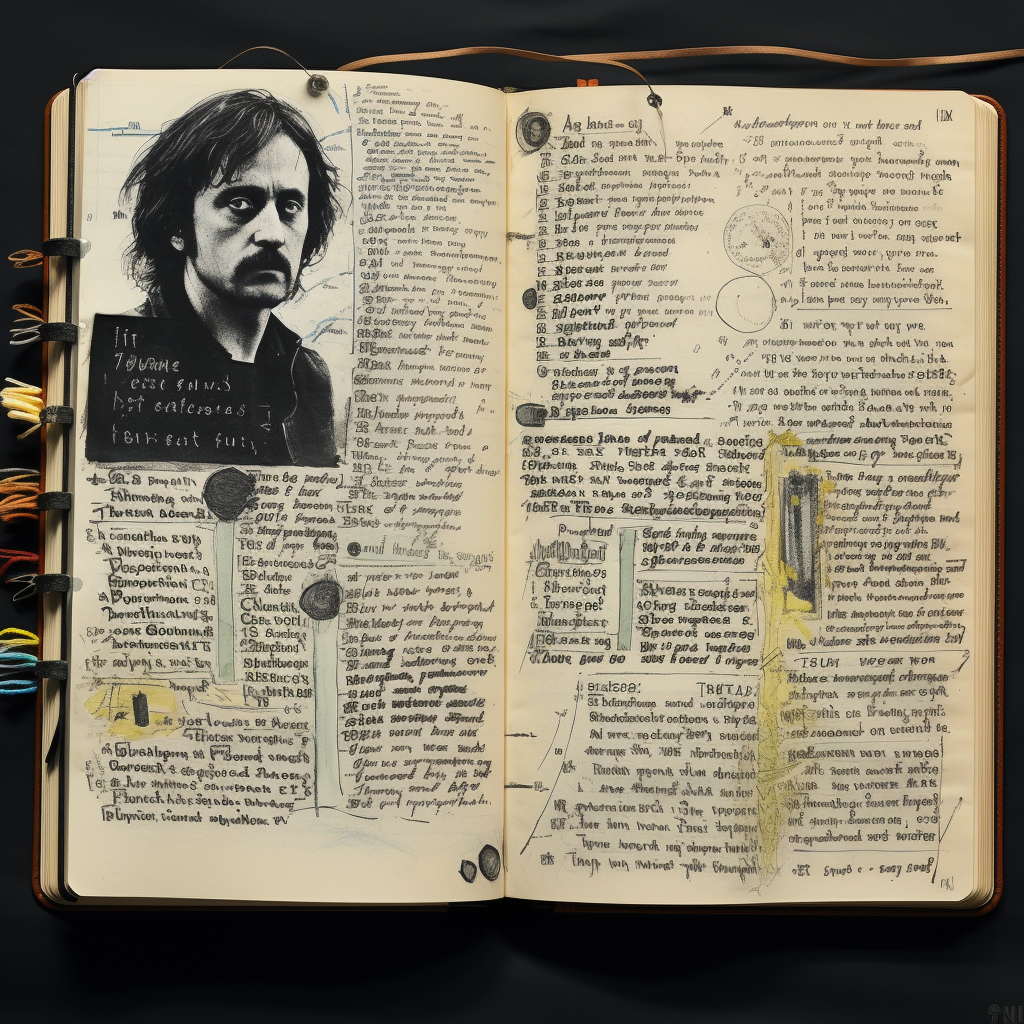Baseline Document and Reflection
Research & source-based paper example: https://www.academicmatt.com/individual-assignments/digc1200-participatory-futures
Process artifact: https://www.academicmatt.com/individual-assignments/process-artifact-how-to-avoid-systemic-collapse
Reflection:
This was a research paper written as part of the DIGC1200 class on digital literacy and cultural change in Summer 2023. As part of the participatory futures module, I asked the question of how we might save the world by avoiding systemic collapse of the very things which sustain us. Leaning on aspects of emergent strategy, biomimicry and learnings from degenerative collapse in the life sciences, I explored how small decisions drive large consequences in digital spaces, and how the risks posed by artificial intelligence might be solved by the most human of choices. I kept detailed notes of ideas from readings and lectures I wanted to bring in, and organized them all sequentially in Evernote.
This piece began with a mind map, which helped me wrangle a number of thoughts, but also see the work differently and more holistically than I’d previously organized it in Evernote. I was able to see new connections when I wasn’t just scrolling and trying to create a running order. I also knew I wanted to illustrate and present it as a New York Times opinion section piece, given that my audience was expressly identified as those with the power to actually affect the kinds of changes i was proposing in the real world. To do that, I wanted to do two things with generative products. Give the reader the opportunity to make the kinds of human vs. machine choices I was asking in the article for themselves, and to illustrate it with New York Times-level generative imagery. After I’d created the written article, I ran it through Descript, a voice bot trained on my own voice. I also recorded my actual voice reading the article. The reader could then choose for themselves which they prefer, echoing many of the thoughts and arguments proposed in the article itself. The imagery of the bees was generated in MidJourney. One of the processes I greatly enjoyed was the opportunity to evolve the narrative in both written and visual form, weaving the visuals around the text, and having them both inform each other as things progressed. That was an approach I’d revisit later to greater effect in subsequent creative writing classes.
I edited this dozens of times over many days as my thinking evolved as I sat with the work. It wasn’t procrastination, but it was really necessary to have the space to sit with what I’d done, and understand what needed to still change. That there was enormous value in just sitting ‘in’ the work, thinking it through in quiet spaces, and not trying to write my way out of it all. This process was slow. Perhaps slower than I would have liked it to be. It is a necessary place of discomfort for me. But what I found was that there’s enormous power in writing early, and then having the space the sit, really sit with it all. I sought feedback early and often, both from the academic staff and my peers in class. This helped to think deeper about the order, the presentation, and how it might all be made clearer and stronger. That there is power in slow. Even this project, which was made over the course of a rainy weekend, was tinkered with, tuned, and optimized for about ten days before being released to the world. For someone who spends their professional life in a newsroom, that can feel like an eternity.
The real joy for me is seeing it all come together. To take a page from flashing cursor to finished article. To step back and have realized something from nothing. I always know that where I end up is never where I think I’m going to go, but being able to execute on something which ‘looks and feels like The New York Times’ was incredibly energizing. As was being able to introduce the more creative generative aspects of the piece through the use of artificially generated voice work, which I was learning as I was doing. I am deeply motivated by seeing the entire body of the work grow and evolve over time. Those moments where the whole becomes greater than the sum of the parts, and the body of the work is greater than any individual piece. As such, very often the challenge for me, especially in a piece like this, is knowing when to stop. That the joy of being swept up by the work itself makes it easy to arrive at several destinations, but never a definitive end point. In doing this, I can often lose sight of the reader, even though I am often writing more for me than them. In an academic context, many of these types of assignments didn’t contain the constraint of word count, which I seized upon, perhaps to the detriment of the overall experience.
My editing is a work in progress. As am I.































